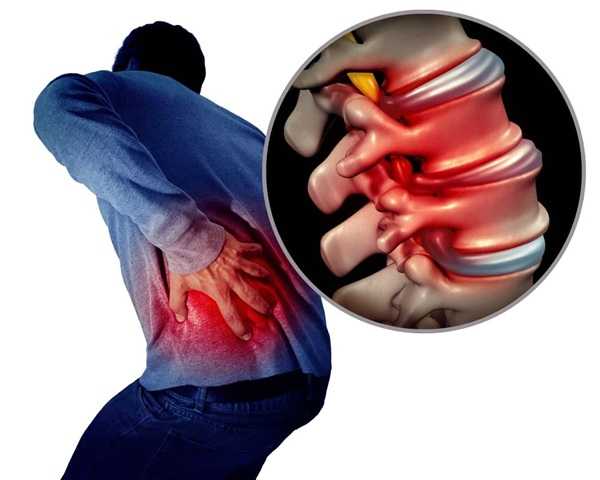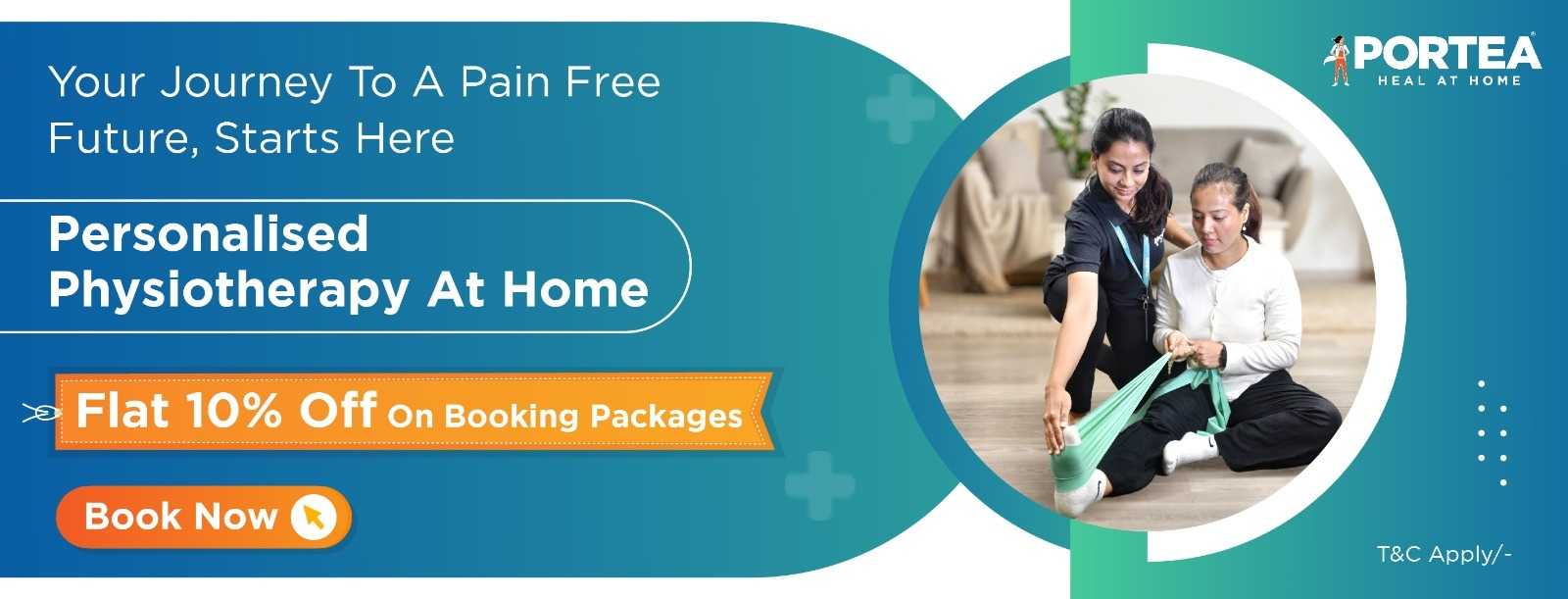
Expert Physiotherapy at Home
Certified physiotherapists visit you at home to provide focused, one-on-one care tailored to your needs. With no travel or waiting rooms, recovery happens in a setting that is comfortable, familiar, and built around your convenience.
Personalised Recovery Programmes
Every treatment plan is designed to suit your condition, goals, and pace. Our physiotherapists follow structured, evolving protocols to ensure consistent progress, with each session aligned to deliver meaningful results.
Trusted Physiotherapists. Real Results.
Our team comprises experienced, background-verified physiotherapists trusted by thousands of families. With a strong focus on safety, reliability, and clinical outcomes, we make recovery at home both effective and reassuring
Patient Testimonials
Portea Physiotherapists for Home Visits
Meet some of our experienced and dedicated healthcare professionals

Dr. Lokesh G
Physiotherapist
Specializations
Experienced in Neurological rehabilitation, Orthopaedic physiotherapy, and Paediatric care
Delivers structured, high-impact treatment plans across neuro, ortho, and paediatrics—ensuring safety, comfort, and measurable recovery at every stage.

Dr. Mohammed Sarwar
Physiotherapist
Specializations
Experienced in Neurological rehabilitation, Adult physiotherapy, and Paediatric care
Combines deep clinical expertise with a compassionate approach, supporting both adults and children through neuro and physical rehabilitation that promotes long-term independence and recovery.

Dr. Nelapati Divya
Physiotherapist
Specializations
Skilled in Orthopaedic rehabilitation, Manual therapy techniques, and Paediatric physiotherapy
Brings a personalised, hands-on approach to healing—combining structural expertise with paediatric sensitivity to restore movement, relieve pain, and improve everyday function.

Dr. Naveen V
Physiotherapist
Specializations
Trained in Pain management, Cardiac and Orthopaedic rehabilitation, Neurological care, and Neural tissue mobilisation
Brings clinical precision and empathy together—designing science-backed recovery protocols for pain relief, nerve mobilisation, and cardio-neuro-ortho rehabilitation across all age groups

Dr. Miloni Savla
Physiotherapist
Specializations
Holds an MPT in Orthopaedics with a focus on Musculoskeletal rehabilitation and strength recovery
Delivers focused, movement-oriented therapy grounded in orthopaedic science—helping patients rebuild strength, restore function, and return to daily life with confidence

introduction to lumbar canal stenosis
Lumbar canal stenosis is a condition where the spinal canal in the lower back becomes abnormally narrow, causing compression of the spinal nerves. This narrowing can lead to a range of debilitating symptoms, significantly impacting mobility and quality of life. It is most commonly seen in older adults as part of the natural aging process but may also occur due to other underlying factors. Understanding the causes, symptoms, and treatment of lumbar canal stenosis is vital for effective management and better patient outcomes. When left untreated, this condition can severely limit an individual’s ability to perform daily activities, underscoring the importance of timely diagnosis and intervention.
signs and symptoms of lumbar canal stenosis
Lumbar canal stenosis often manifests with a range of symptoms, the most prominent being persistent lower back pain that can radiate into the legs. Many patients report a sensation of numbness or tingling, particularly in the legs, which can progress to muscle weakness over time. A key hallmark of the condition is neurogenic claudication, characterized by pain, cramping, or heaviness in the legs, especially after walking or standing for extended periods. This discomfort is typically relieved by sitting or bending forward. In severe cases, individuals may also experience difficulty maintaining balance, which increases the risk of falls. These symptoms can vary in intensity and often worsen as the condition progresses.
causes of lumbar canal stenosis
The primary cause of lumbar canal stenosis is age-related degeneration of the spine. Over time, the ligaments in the spine may thicken, intervertebral discs may bulge or herniate, and bone spurs may develop, all contributing to the narrowing of the spinal canal. Conditions such as osteoarthritis or rheumatoid arthritis can exacerbate these degenerative changes. In some cases, congenital abnormalities, such as a naturally narrow spinal canal, can predispose individuals to stenosis. Additionally, traumatic injuries, infections, or spinal tumors may also contribute to the onset of this condition. Understanding these underlying causes is essential for tailoring an effective treatment plan.
risks of lumbar canal stenosis
The likelihood of developing lumbar canal stenosis increases with age, particularly in individuals over the age of 50. Certain risk factors, such as a history of spinal injuries or surgeries, can further elevate the chances of developing this condition. Lifestyle factors, including prolonged sitting, obesity, and occupations that require repetitive heavy lifting, can place additional strain on the lower back, accelerating degenerative changes in the spine. Genetic predisposition to spinal abnormalities also plays a role in some cases. Identifying and mitigating these risk factors early on is crucial for preventing or delaying the onset of symptoms.
prevention of lumbar canal stenosis
Maintaining a healthy and active lifestyle is key to reducing the risk of lumbar canal stenosis. Regular exercise, particularly activities that strengthen the core and lower back muscles, helps support the spine and prevent excessive strain. Practicing good posture, both while sitting and standing, can minimize undue stress on the lower back. A balanced diet rich in nutrients that support bone health, such as calcium and vitamin D, is equally important. Early diagnosis and management of spinal conditions, such as herniated discs or arthritis, are critical in preventing these issues from progressing into more severe conditions like lumbar canal stenosis.
treatment and diagnosis of lumbar canal stenosis
Diagnosing lumbar canal stenosis begins with a thorough clinical evaluation, including a detailed medical history and physical examination. Imaging studies, such as X-rays, MRIs, or CT scans, are often used to confirm the diagnosis and determine the extent of the narrowing. Treatment typically begins with conservative approaches, including pain management through medications, physical therapy, and lifestyle modifications. Epidural steroid injections may be recommended to reduce inflammation and alleviate pain. In cases where conservative methods fail to provide relief, surgical interventions, such as decompression surgery or laminectomy, may be necessary to relieve nerve compression and restore function.
how physiotherapy helps
Physiotherapy is an essential component of managing lumbar canal stenosis, offering non-invasive solutions to alleviate symptoms and improve quality of life. A structured physiotherapy program focuses on relieving pain, restoring mobility, and strengthening the muscles that support the spine. Techniques such as manual therapy and spinal traction help decompress the nerves and alleviate pressure on the spinal canal. Targeted exercises aim to enhance flexibility, improve posture, and increase core stability, which can significantly reduce strain on the lower back. Additionally, physiotherapists educate patients on ergonomic adjustments and safe movement patterns to prevent further injury and promote long-term spinal health.
how portea helps
At Portea, we understand the challenges that come with managing lumbar canal stenosis and offer personalized care designed to meet each patient’s unique needs. Our home-based physiotherapy services provide convenience and expert guidance, allowing patients to recover in the comfort of their homes.
Beyond lumbar canal stenosis, Portea specializes in a wide range of physiotherapy services, including post-surgical rehabilitation, arthritis management, neuro-rehabilitation, sports injury care, orthopaedic physiotherapy, elderly care, and respiratory therapy. All our services are delivered at home, ensuring a safe, comfortable, and effective recovery experience tailored to your specific requirements.
portea’s other physiotherapy services based on medical conditions
faq’s on lumbar canal stenosis
1. Can lumbar canal stenosis be treated without surgery?
Yes, lumbar canal stenosis can often be managed with non-surgical treatments like physical therapy, pain medication, and lifestyle changes. Surgery is usually considered only if conservative treatments fail to provide relief.
2. Is lumbar canal stenosis a progressive condition?
Yes, lumbar canal stenosis tends to worsen over time, particularly if left untreated. Early intervention with physical therapy and lifestyle modifications can help manage symptoms and slow down the progression of the condition.
3. Can lumbar canal stenosis affect both legs at the same time?
Yes, lumbar canal stenosis can affect both legs, especially in more advanced cases. Symptoms like pain, numbness, and weakness can be present in one or both legs, depending on the location of the nerve compression.
4. Are there any activities I should avoid with lumbar canal stenosis?
Patients with lumbar canal stenosis should avoid activities that put excessive strain on the lower back, such as heavy lifting, prolonged sitting or standing, and high-impact exercises. Low-impact activities like swimming or walking are typically better tolerated.
5. How long does it take to recover from lumbar canal stenosis?
Recovery time can vary depending on the severity of the condition and the treatment method used. Conservative treatments like physical therapy may take several weeks to show improvement, while recovery from surgery can take a few months.
6. Is lumbar canal stenosis linked to other health conditions?
Yes, lumbar canal stenosis can be linked to other spinal conditions like osteoarthritis, degenerative disc disease, and scoliosis. These conditions can contribute to the narrowing of the spinal canal and the development of stenosis.
7. Can weight management improve symptoms of lumbar canal stenosis?
Yes, maintaining a healthy weight can help reduce the strain on the spine and lower back. This can alleviate some of the symptoms of lumbar canal stenosis and improve overall spinal health.
8. What are the chances of needing surgery for lumbar canal stenosis?
The need for surgery depends on the severity of symptoms and the effectiveness of conservative treatments. Most patients manage the condition without surgery, but those with severe, persistent symptoms that do not respond to other treatments may require surgical intervention.
9. Can lumbar canal stenosis affect my ability to walk?
Yes, lumbar canal stenosis can cause difficulty walking, especially if the condition leads to neurogenic claudication (leg pain or cramping) during walking or standing for prolonged periods. In severe cases, mobility may be significantly impacted.
10. Are there any specific stretches that can help with lumbar canal stenosis?
Certain stretches and exercises recommended by a physiotherapist can help alleviate symptoms of lumbar canal stenosis, particularly those that target lower back flexibility, leg strength, and posture. Always consult with a healthcare provider before starting a new exercise routine.
Doctor Consultation
Nursing
Physiotherapy
Trained Attendant
Elder Care
Mother & Baby Care
Lab Tests
Medical Equipment
Speciality Pharma
Critical Care





